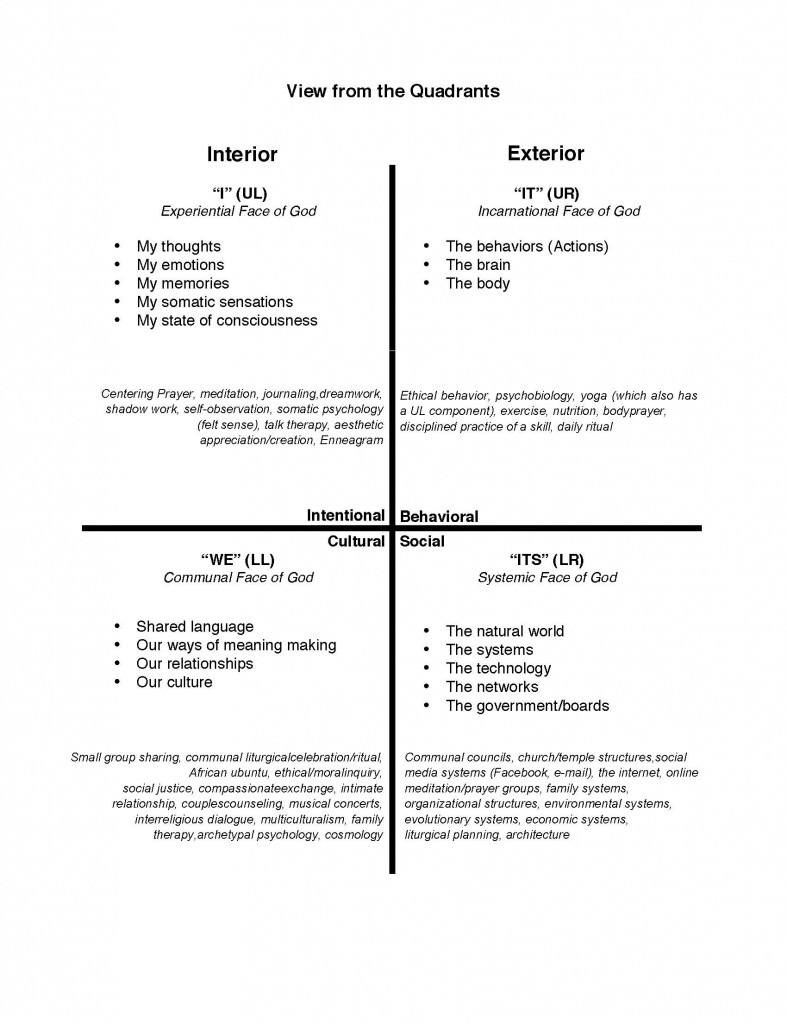In previous posts I’ve explored how Wilber’s quadrants help us look at the three ways we humans experience the Ultimate. In this post, we’ll look at the practices that deepen the experience of each face. In my third post on this site I introduced the quadrants, the first of five main aspects that comprise the scaffolding of the Integral Framework. I also mentioned the insights that Laura Divine and Joanne Hunt of Integral Coaching Canada added to the framework.
Basically what Laura and Joanne noticed over years of working with coaches in training using the Integral Framework was that people seem to naturally fall into one of the four quadrants. Like me, they’ve never met a typology (another aspect of Integral Theory) that didn’t interest them so they begin to consider that how we relate to the quadrants could be a typology. In other words, that there are characteristics typical of each quadrant that tells us something about an individual. Testing out their hypothesis with many people over years of time convinced them that indeed we do seem to favor a particular quadrant and that there are characteristics that can be attributed to each one. Today one’s primary and secondary quadrant orientation is one of the ways we assess a coaching client.
Because of my interest in spiritual development, I immediately began to wonder if the quadrant one favors has any correlation to the Face of the Ultimate that resonates most deeply with an individual. I began to explore that question anecdotally with my friends and sure enough found some validity. I orient with the Upper Left and find my way to the Divine through the first person. My husband orients from the Lower Right and finds his way into God through the third person. My best friend orients from the Lower Left and finds her way to Spirit through the second person. As I began teaching the Three Faces to a group of spiritual directors the exploration widened and while not always true, seemed to be the case very often.
Just as my spiritual director’s group was embarking on a group project to see what practices deepened each of the Faces, my friend Leslie Hershberger’s wonderful course on Integral Christianity entitled Coming Home was introduced through Integral Life. (I highly recommend this course for those of you interested in the Christian path but no longer resonate with the traditional theology). To my delight I found Leslie had started the project for us. Her chart gives a great overview of the quadrants as they relate to the realm of the spiritual. She was happy for me to share it for Patheos readers. I’ll talk in subsequent posts about the characteristics of each quadrant and specific spiritual practices for each.















